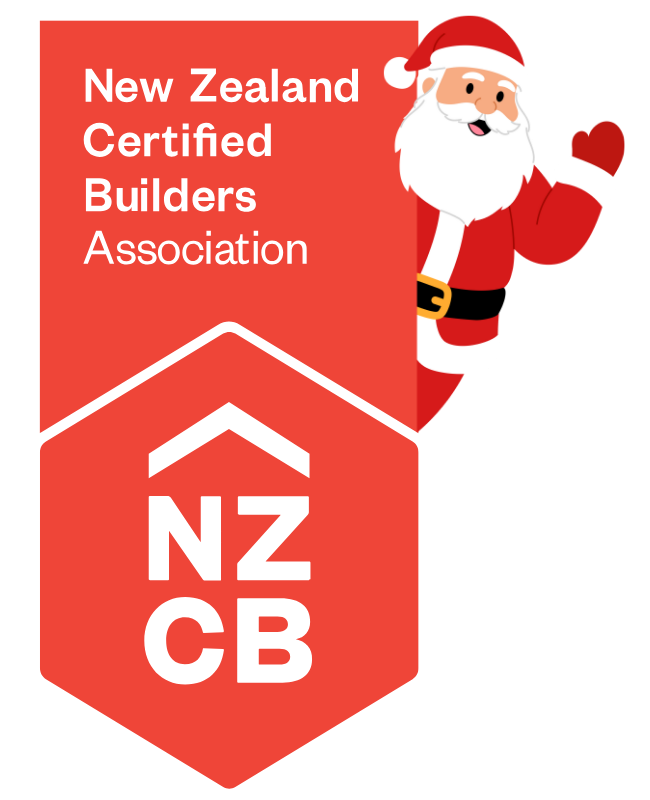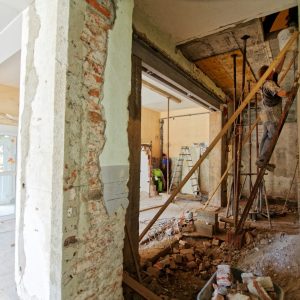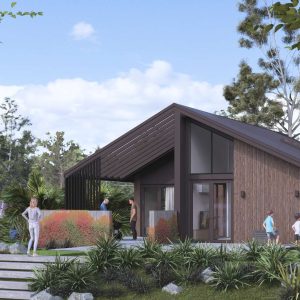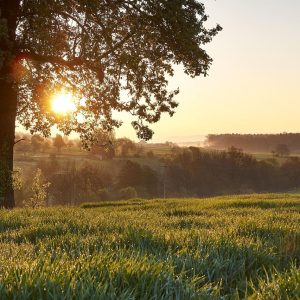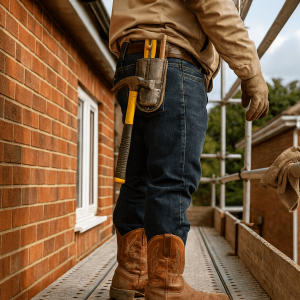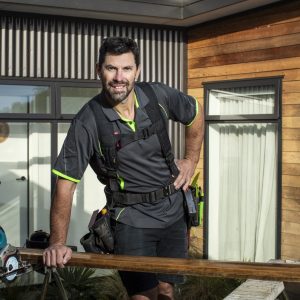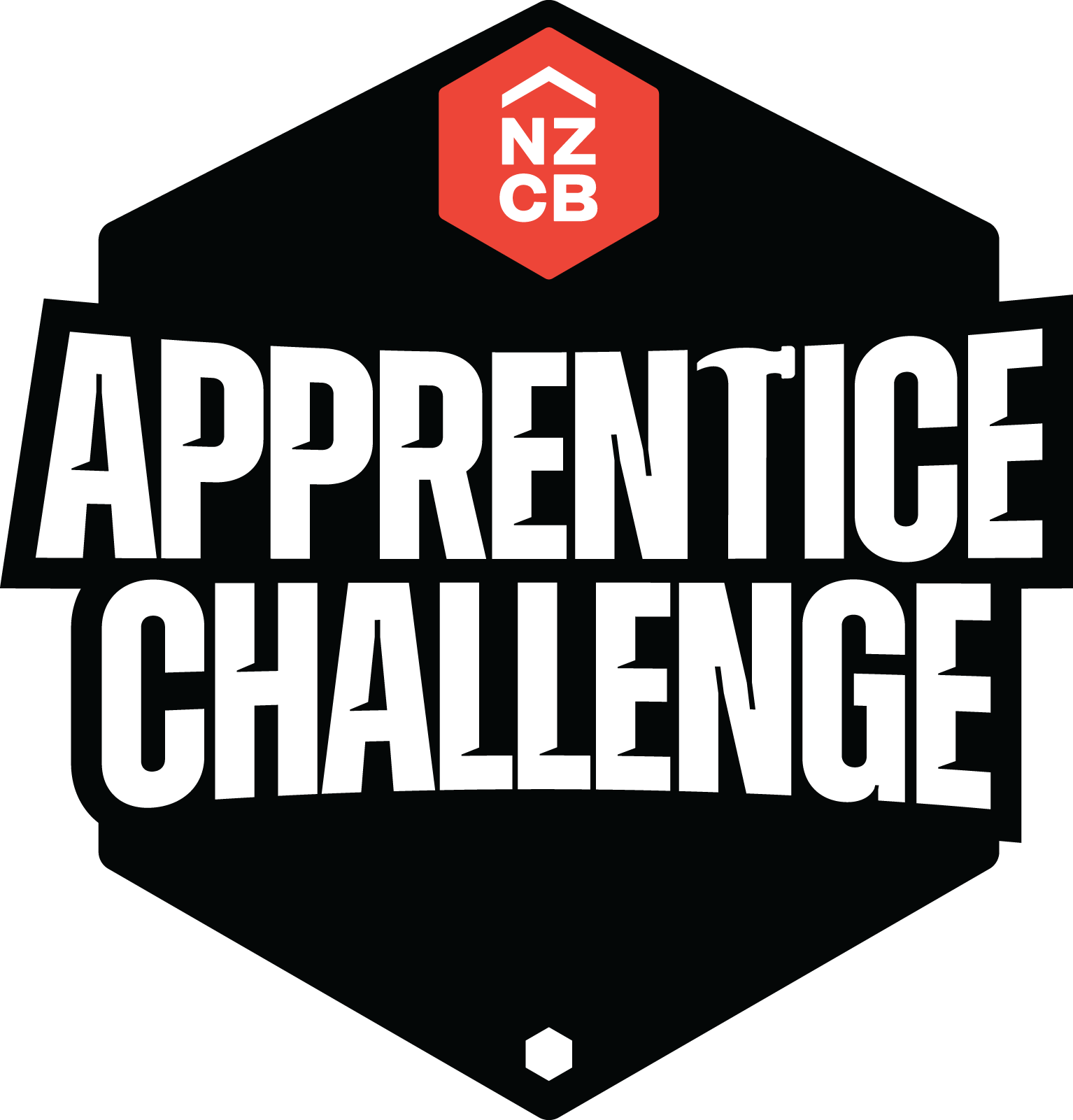This article featured in the June 2025 edition of the NZCB InHouse magazine.
A team of tradies and apprentices from Nelson took a contract at a ritzy resort in Fiji and returned with far more than suntans and duty free. Builder Andy Wells tells Sarah Daniell about a journey greater than the sum of its parts.
Tropical island resorts usually conjure images of languid days in beach loungers, sunset cocktails and an escape from the daily grind.
For Nelson builder Andy Wells, a six-week stay at one of the world’s top resorts in the South Pacific meant adapting to 12-hour-days toiling in peak humidity, during the cyclone season.
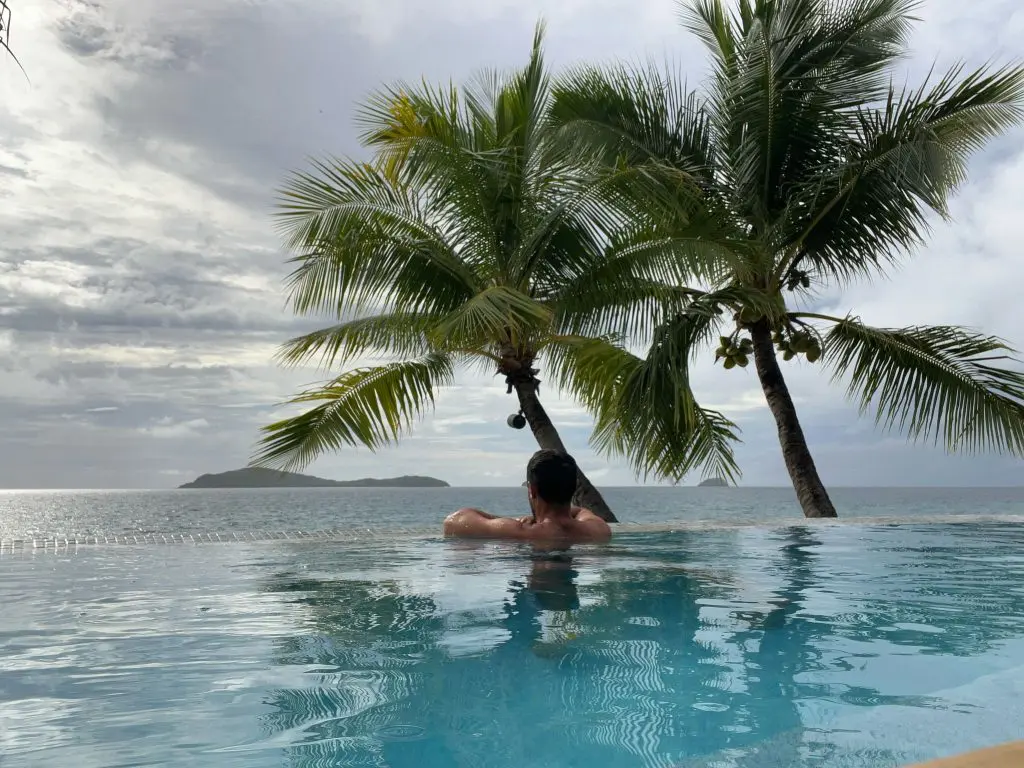
Hard work in paradise
In January this year, Andy and a team of four, including two tradesmen and two apprentices from Tasman Homes in Nelson, travelled to the ultra-luxurious Kokomo Private Island resort in the Great Astrolabe Reef in Kadavu, the island group south of Nadi.
In 2024, Kokomo was named one of the Top 50 Best Hotels in the World. Owned by an Australian property developer, it’s a playground for the very wealthy and the very famous, including Snoop Dogg and George and Amal Clooney.
The island has 21 beach-front villas, five grand luxury residences, restaurants and beach shack eateries, Koko Cabana cocktail bar and day spas. The accommodation, however, was empty of A-listers when Andy and the team landed.
“The island was in a shut-down period for six weeks,” says Andy. “Our project was, initially, to replace decking timber on the beachfront villas, laying new piles, bearers, joists and mahogany decking timber. And so for three of the lads, that was their job for three weeks.”
The team laid close to a thousand square metres of decking. “Which in three weeks is a pretty big task.”
But after ripping through the initial set of tasks, Andy and his team found the work just kept coming.
Other projects included cabinetry work on the Koko Cabana Bar.
“There’s a pool and then there’s a swim-up bar with a big pizza oven. One of the crew, who’s experienced in cabinet making, worked with an architect drawing up plans for the cocktail bar, designing and building this beautiful bar.
“I had a bit of a role in the management team, so I’d turn up for the meetings and go through the schedules and the processes and the projects, and then I’d jump in and work with the construction carpentry team.
“They just kept giving us more and more stuff to do. They’re like, ‘okay, well, you’re getting through this pretty quick, we’ll do this, and we’ll do this, and we’ll do this, we’ll add that to it.’ For us, it’s like, ‘sweet, just keep it coming’.”
Nelson to Fiji thanks to an apprentice
So how did Wells and his crew end up in Fiji in the first place?
“At Tasman Homes, we had a young fellow, Finn, who’s a Kiwi-Fijian. He moved to New Zealand during his college years, and we took him on as an apprentice. He’s a very likeable, talented young builder,” says Andy.
“In New Zealand, he did the NZCB Apprentice Challenge a few times and succeeded really well in those competitions. And then once he got his trade … off he went.”
Finn, who’s now employed at Kokomo, is basically Fijian royalty, says Andy.
“He’s really well regarded and his family are well known throughout the country. And so he’s got networks and ties that have now come to benefit us, basically.
“Finn’s got great connections within the construction industry throughout Fiji and the surrounding islands. He put the idea forward to the Kokomo Island management team about us coming over.
“It was like, ‘Hey, there’s an opportunity here, are you guys keen?’ And you can imagine our response … ‘we can make it work’.”
The island sorted all flights, insurance and logistics which made getting there and working “a breeze”.
It was Wells’s first time working in such an environment.
“Again, Finn gave us a reasonably clear picture of what to expect. He sent through videos and pictures of the island and the scope of the works.
“He also said, ‘it’s bloody hot’ so bring electrolyte sachets.”
The island, branded “barefoot luxury”, is relatively small, linked by sealed roads, and has four beaches.
“Beach One is where your guests arrive and it’s all glitz and glamour. There’s the restaurant and the beach shack where you’re welcomed onto the island.”
Beach Two is largely staff accommodation and quarters, Beach Three is gardens, and Beach Four is the “industrial zone”, with a barge docking station where boats come in every second day with supplies and materials from the Fiji mainland and around the world.
Each morning Andy and the team would jump into golf carts down to Beach Four to a large staff canteen for a hearty cooked breakfast.
“So there we are at 5.30am eating breakfast … and it’s hot. We’d be on the tools at 6:30am and by 7am we were practically drenched with sweat.”
An army of builders marches on its stomach, even in 30 degrees. There were smokos, more food, and throughout the day lunch and carts bearing refreshments, including snacks and drinks, would do the rounds of the sites.
“We’d work through till 6.30pm and then dinner, and then you’ve got a couple of hours of chill time in the evenings.
“And that would be the day, rinse and repeat, for six weeks. They were long days. We’re there to work, we’re there to earn some money and we’re there to help Finn out. To prove our worth.”
Andy and the crew each took about 23kg of tools to Kokomo from New Zealand. But Andy says the resort’s hardware resources are impressive.
“There’s a full carpentry workshop, a full cabinet-making workshop, concrete-making facilities, huge storage for stacks of wood, stacks of all the fixings, all the personal protective PPE for the workers, boots and gloves and helmets. And the biggest diesel generator I’ve ever seen that powers the whole island.”
Water from the island source is desalinated and there’s a full recycling plant on site.
“We’re all drinking bottled water and you’re kind of thinking, oh, man, there’s a lot of plastic being wasted here. But at their recycling facilities, they’re separating the materials, and there’s a full composting facility where they’re taking all the cardboard, all the food waste and making their own mulch and then putting that back into their own gardens.
“There’s a lot of sustainability and ecology on the island, which is pretty special.”
The island has an in-house electrical team and plumbing team. Finn led the carpentry team – 12 local, full-time employed carpenters.
“They ranged from the seasoned guys – 12 years living on the island – and they’re doing constant upkeep. “Then they had anywhere from 20 to 80 people turn up daily on the early barge that came from neighbouring islands.
“They’d turn up, have breakfast at 5am and away they go. And they get distributed into the landscaping team, the electrical team and the carpentry team. So we’d be able to say, we need 20 today, or we need 18, or we need five.
“And for us, instead of us doing all the bulk of the work, your mindset kind of changes.
“I’d say to my guys, I just need you to get into that management role where you know the tasks, you can set them up to do the bulk of the work. More of a delegating role. And we’d be able to move forward five times as quickly as you normally would.”
Immediately, he says, it’s about up-skilling from the point of view of your team, “because many of them wouldn’t have been in a position to delegate before and see how that works.
“It’s a mind-shift, because normally, you’d be the one putting the final screws in and doing all the pretty work, but actually you’re more utilised in the progression of work.”
“But we let the locals loose on our tools, teaching them how to use a spirit level, router or a trimmer.
“For us to be able to teach them how to use those tools – what we do on a daily basis – and teach processes, like how we’d do decking, for example, was really satisfying.
“There was definitely a lot of training and teaching on our behalf, but then looking at it from the other way, we also picked up lots of cool skills.”
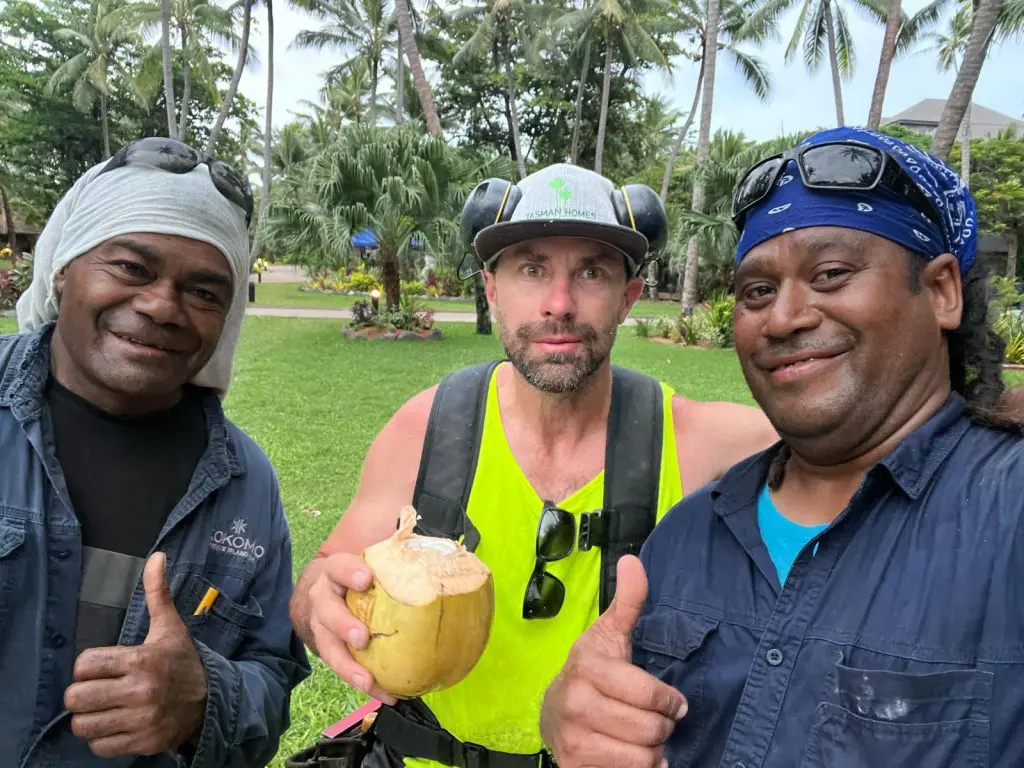
Compassion and education
It takes a special set of characteristics and skills to adapt to a new environment, in a different culture: patience, diligence, but also compassion.
Andy comes from a background in outdoor education and adventure.
“For me it’s about that compassion and education. I’m a pretty passionate builder as well, so put all those together, and I guess that does help in terms of how you work, what you can produce and achieve on a remote island like that.”
After leaving school at 16, Andy eventually got a degree in outdoor education and adventure recreation.
“From there the opportunities really opened up and next thing, I’ve become a professional snowboarder and I’m rock climbing in Wales, and kayaking in America.”
The nomadic life sounds romantic and exciting but by the time he reached his early 30s, he and his wife-to-be had a moment of clarity.
“You’re traveling season to season in different countries having a really beautiful lifestyle. But my wife and I were traveling through India and came to the realisation that, oh, s***, we should probably go home.
Putting snowboard boots on day in and day sounds like living the dream for many, but after 15 years, “you get to the point where it’s like, right, I need to change.”
Andy’s stepdad was a builder and he grew up in an environment that encouraged capability and creativity.
“I headed towards building. That satisfaction of being able to know that you can do it, rather than outsourcing.
“Now that I can do this stuff, you kind of put a lot of faith in yourself, there’s confidence. It’s possible, I can do it. It’s just a mindset, I guess.”
Rather than keeping his own skill set to himself, Andy embraces knowledge- and skill-sharing. It’s a way of working and thinking that Finn’s also encouraging in Fiji.
“He’s picked out this guy from the Kokomo team and he’s taken him back to the mainland and he’s gonna kind of create his own little team over there. He’s building and creating his team.
“And while I’m there, I’m thinking, man, I’d love to take this guy back, bring him home. Show him how we work in New Zealand and give him a taste of Kiwi carpentry and building, because you see a lot of potential in these guys.”
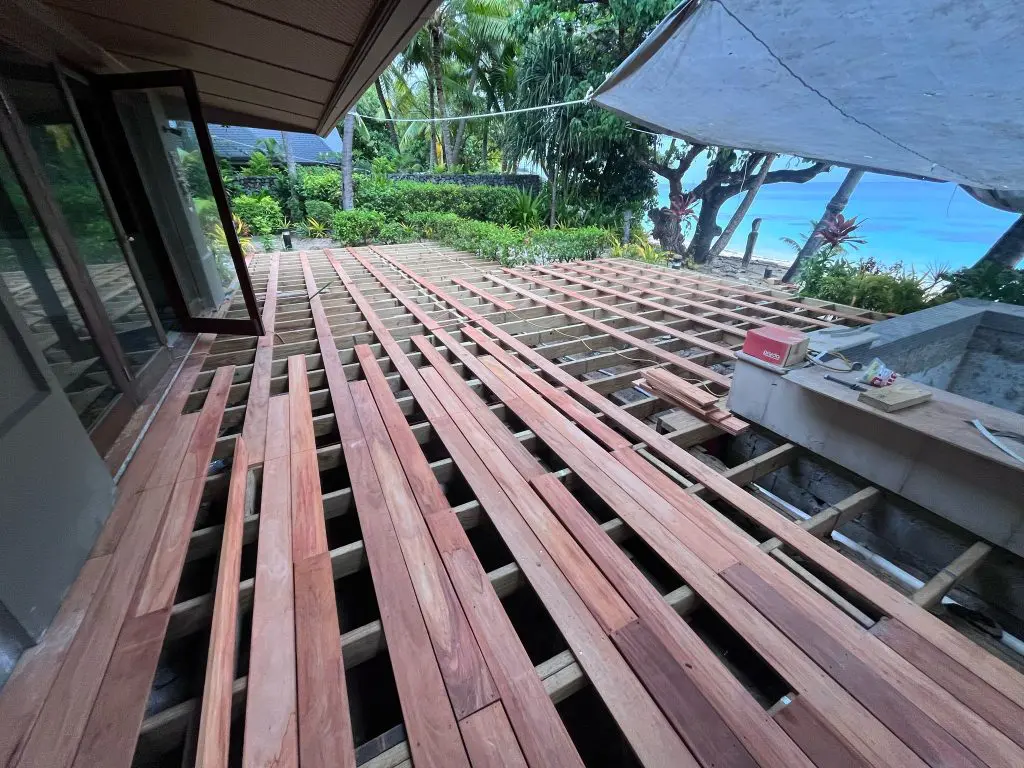
A different way of working
The experience revealed at times the glaring differences in construction practices and regulations between New Zealand and Fiji.
“You don’t imagine anybody can just rock up to an island and build a resort, right? There must’ve had to be something in place that allows them to do A, B, C, D.
“But in terms of red tape, there was nothing. There was nothing that stopped us from doing anything.
“For example, at one point we were putting in a few big steel portals. In New Zealand, you’d have to get an engineer to come and do a design and a plan and then an install report. You’d have to get that installed by an engineer and signed off by an engineer and checked by a council inspection.
“And that process takes probably weeks and upwards of $10,000 or $20,000, right? Versus, ‘hey, we’re going to rip this wall down. We need a steel panel. Phone call down to the engineer guy. I’ll be up in 15 minutes’. They come and measure it. Be back in three hours with it cut and primed, installed, welded, bolted, in place at the end of the day.”
It must have felt liberating, in that sense.
“It was really, really refreshing. Yes, there’s regulations that are in place in NZ – I appreciate those and we need to follow them. But there’s big talk at the moment of red tape and bureaucracy and how we need to remove aspects of that.
“I could see there was enough experience on the island to know that there’s an I-beam running through here and we tie that down to a timber stud. And that timber stud gets tied down to a big concrete bollard. Like, it’s not going anywhere, right?
“I think it’s the balance between all the things that we talk about, the regulations and the red tape, finding the balance between what works for us.”
Taking time out
Most evenings, before or after dinner, Wells and the crew would get into the water with snorkels and masks.
On Sunday afternoons, Wells might work a six or seven hour day, but he and the crew would get a few hours to spend on their phones with family back home. Or use a pool in a chalet that wasn’t being worked on.
“And those moments, it’s like, far out, this is awesome. I’d be on WhatsApp with my wife, and I’d just say ‘sorry, but this is awesome’.”
Each day, Andy would head for the yoga shala before diving into the daily grind.
“I do yoga practice every morning, so that was quite nice. You just jump in the golf buggy and hoon up to this yoga shala. And there was no one else there, at the top of the island, with amazing views.”
It’s an important part of his life balance, he says.
“I work pretty hard as a project manager for Tasman Homes, and you can see that the underlying pressures of working in this industry, especially when it’s always just based on time and money and the stresses that come with that.
“The scheduling, the timings can get to you, so it’s nice to take these reality checks and just check on where you’re at and that you balance that up with family time and, you know, make sure you don’t bring the stress home with you.”
New perspectives
You can look at the Fijian lifestyle, says Andy, and from one perspective it seems pretty laid back.
“That could be really frustrating because we’ve got a deadline. But at the same time, this is how they work and this is their home and we had to adapt to that.
“It’s upbeat, there’s lots of local dance music going on and, it was really cool immersing yourself in their way of life.”
In New Zealand, says Andy, the working focus is, typically, based on two principles: time and money.
“It’s all time and money and that’s the way we work. We price jobs, we do the work, it’s a client’s money and it’s our time and we need to make that work.”
On the island, there’s a different approach and working culture. “Time and money is a completely different concept – they don’t need lots of profit.
“They’re also employing all those locals as well and upskilling them in the process.”
Andy embraced the simplicity, the lack of materialism.
“It’s about clothing, it’s food, it’s comfort, it’s just the necessities opposed to all the extra stuff that we have.
“They just need to get by. Very rarely you’d see them pull out a phone, or that’s what maybe they were saving for, to get an iPhone. But that’s what everyone has back in New Zealand, even 10-year-old kids.
For Andy, it was an opportunity to reflect on work-life priorities. “It was refreshing to come back home and be like, hey, it’s okay. We still have to work to our timing and budgets, but at the same time, we’re still living our lives, right?
“It’s just a gentle reminder that life is not just about work. It’s actually the time with family and yourself that’s special.”
Fijian culture is very focused on “family”. And that commitment flows into the workplace. Which brings us back to Finn and where it all began.
“I love that idea – the sharing and mentoring. There was a lot of that going on, it’s intergenerational, you know? Whether it be mastery coming from us or some mastery coming from some of the seasoned lads on the island. We got quite a bit from them, too. It was amazing.
What’s next?
While there were personal and professional “learnings”, Andy was mindful of who he represented and why he was there.
“Ultimately, when we went over there, I wore the Tasman Homes badge pretty proudly, and I went over with the ambition of basically being asked back.
“I want to go over there and set this as the standard. This is how we work. This is what we do.
“We’ve been asked back. It hasn’t taken long for Finn’s reputation and Tasman Homes’s brand to become known throughout Fiji. But it’s something I see in the future, if we can kind of schedule in a few months of the year.
“Kiwis can go to Fiji and get a working holiday visa for 21 days on arrival. You can work for three weeks.
“It’s a pretty cool relationship that Finn and I and my boss at Tasman Homes Garry Nott can evolve. And hopefully you kind of schedule this into your work because there’s a lot of benefit to come from it.”
Next time he’d like to schedule in another couple of days for a surfing trip or a fishing trip.
“Because it’s such a rare opportunity, you want to be able to make the most of it in terms of the beauty of the environment and share that with your family.”
The job:
The initial scope of works for Tasman Homes was:
- Replacing old decking timber with new Fijian mahogany
- Building and installing cabinetry and a bar for Koko Cabana
- Re-vamping a villa and building a deck
The scope was increased to:
- Building a 100m/sq deck
- Install match-lined timber on a cathedral ceiling
- Building a Pickle Ball court
- Extending a basketball court
- Installing steel portals
- Building pergolas and post structures
Materials:
Primarily, locally sourced pine and mahogany timber. GIB board and fixings were imported from NZ. The architecture is “authentic Fijian meets modern design.
“It was refreshing to be building with this ‘barefoot luxury’ concept in mind. We were never really having to chase the millimeter. But keeping our standards high meant we were sure to impress. We each took over a bag of tools – tool belts, hand tools, a set of Makita battery tools.”
